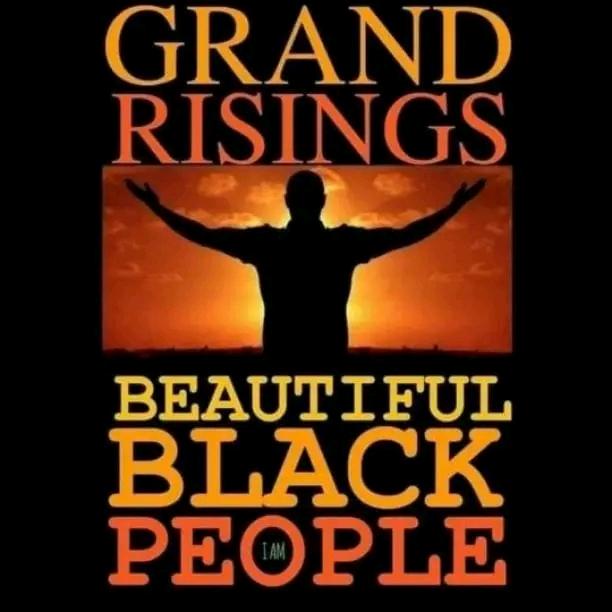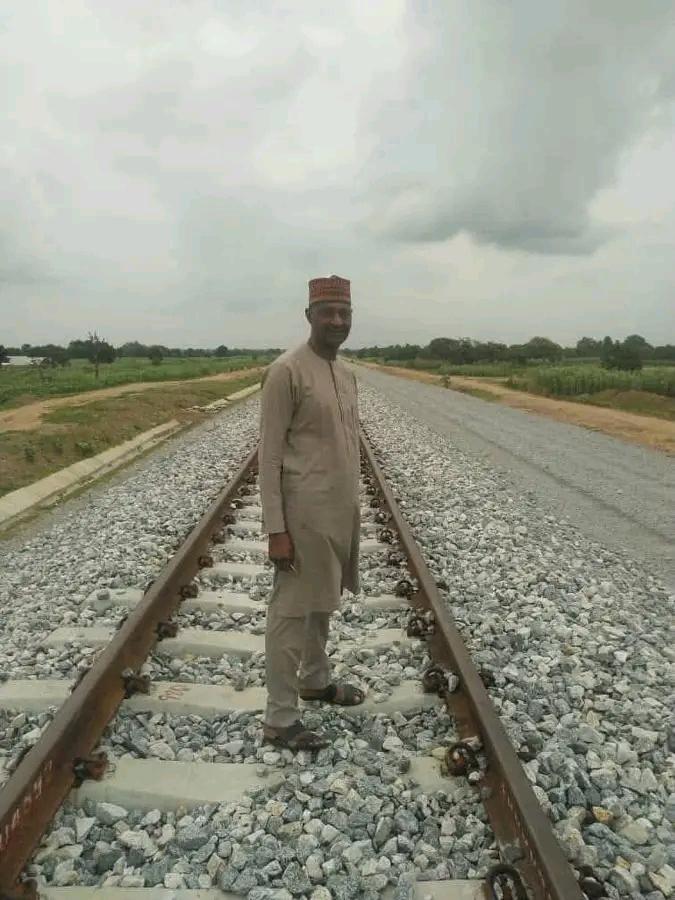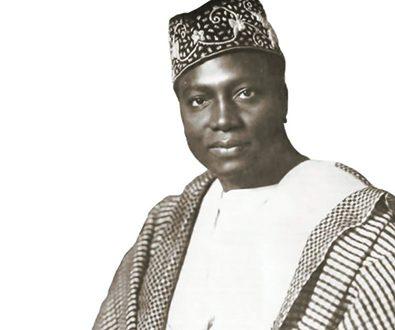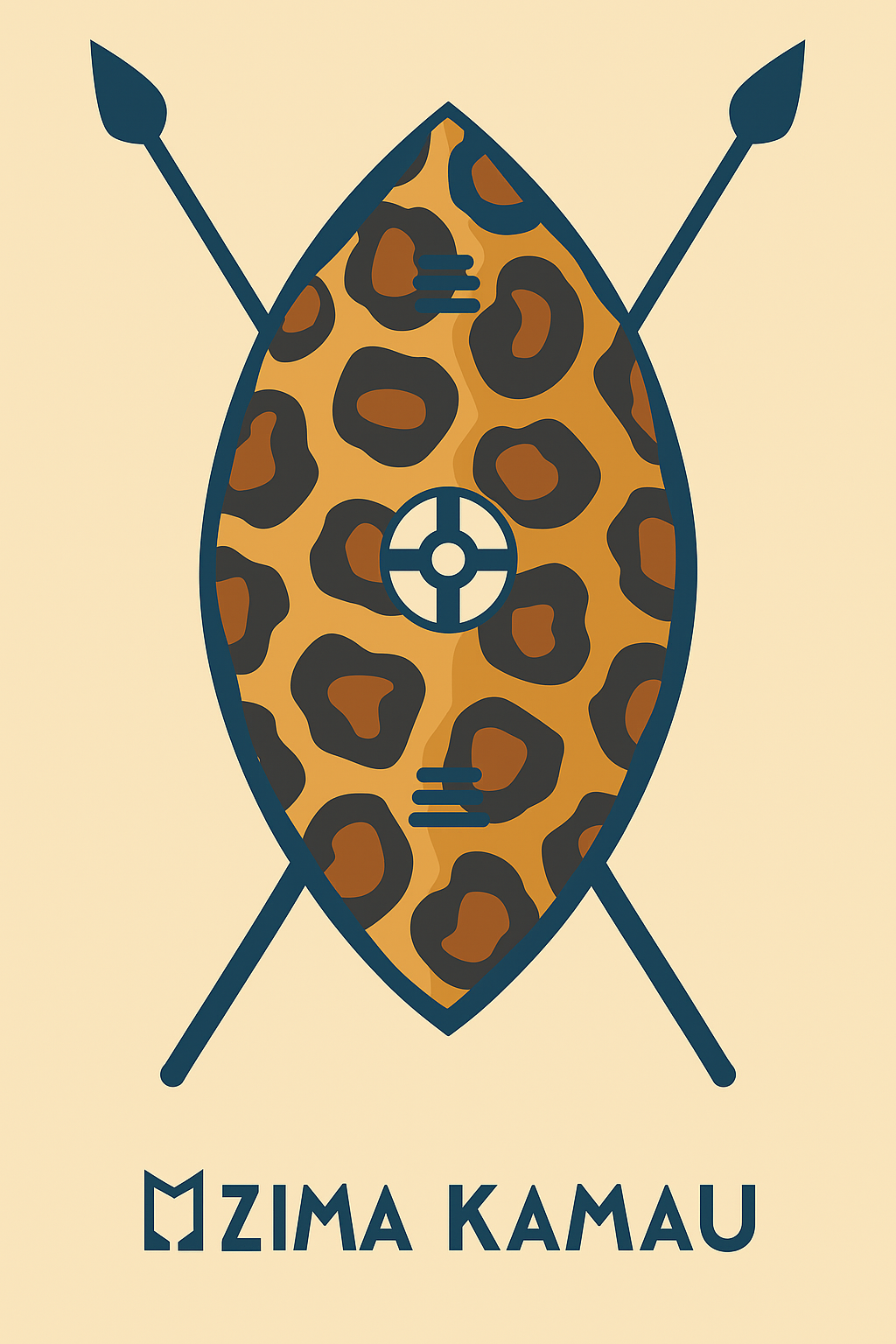


@InalegwuKamauAdole
Black Afrikan Ultra-Nationalist
Pan Afrikanist
Lumumbaist-Sankaraist
Revolutionary
Pan Afrikanist
Lumumbaist-Sankaraist
Revolutionary
213 Posts
197 Photos
35 Videos
-
News update
🇲🇱 The Malian army is committed to ensuring road safety from terrorists
General Makan Alassan Diarra, Deputy Chief of Operational Staff of FAMa, confirmed that the army will continue to fight the terrorist acts that have recently occurred in the country. He noted that attacks, including car arson, are filmed and spread on social networks to intimidate the population.
The general reported on the measures taken to ensure road safety, especially in the Bamako-Kaes section, so that entrepreneurs could work without threat. He stressed the complexity of fighting local groups and noted that the lessons learned will help strengthen the protection of the population and the economy.
Earlier, Prime Minister General Abdoulay Maiga met with a representative of the Malian Oil Products Specialists Group after an attack on a fuel convoy on the Kayes-Bamako highway. Maiga assured that large-scale measures are being taken to strengthen the security of supply routes and called for compliance with the instructions of the defense and security forces.
#Mali
@africaintelNews update 🇲🇱 The Malian army is committed to ensuring road safety from terrorists General Makan Alassan Diarra, Deputy Chief of Operational Staff of FAMa, confirmed that the army will continue to fight the terrorist acts that have recently occurred in the country. He noted that attacks, including car arson, are filmed and spread on social networks to intimidate the population. The general reported on the measures taken to ensure road safety, especially in the Bamako-Kaes section, so that entrepreneurs could work without threat. He stressed the complexity of fighting local groups and noted that the lessons learned will help strengthen the protection of the population and the economy. Earlier, Prime Minister General Abdoulay Maiga met with a representative of the Malian Oil Products Specialists Group after an attack on a fuel convoy on the Kayes-Bamako highway. Maiga assured that large-scale measures are being taken to strengthen the security of supply routes and called for compliance with the instructions of the defense and security forces. #Mali @africaintel0 Comments ·0 Shares ·4 Views ·0 Reviews -
❗️Putin confirms more than 700,000 Russian soldiers on the front line of the special military operation zone right now.
@AussieCossack❗️Putin confirms more than 700,000 Russian soldiers on the front line of the special military operation zone right now. @AussieCossack0 Comments ·0 Shares ·4 Views ·0 Reviews -
FRANCE DARK IMAGE
Some sources claim that France gets ≈ €400-€440 billion per year from its former colonies, especially from those using the CFA franc currency arrangement.
Others say that France takes “85% of foreign exchange reserves” from certain former colonies under banking rules established with those countries at independence.
There are also statements that some former colonies “store” large parts of their national reserves with the French treasury or Banque de France.
Problems / doubts with these figures
Lack of official sources: These claims mostly come from opinion pieces, media outlets, activist or NGO commentary. Not from peer-reviewed research or official French or African government budget data.
Ambiguous definitions: Terms like “colonial tax,” “reserves deposited,” “flow of money,” etc. are used loosely; they are often not clearly defined or quantified in verifiable terms.
Possibility of exaggeration or misinformation: Some articles repeat older claims without solid evidence; numbers vary widely; some are sensational.
Changes over time: Agreements and monetary systems evolve (some countries are reforming or exiting the CFA franc agreements, etc.), so even if some flows existed historically, they may have changed or diminished.
Tentative conclusion
Since there is no reliable documented total amount, I can’t give a definitive “France receives ___ per year” figure from its former colonies. The most common large figures in circulation (like ~€400-440 billion) are likely overestimates or symbolic representations rather than data you can put into a government budget or trade account.
FRANCE DARK IMAGE Some sources claim that France gets ≈ €400-€440 billion per year from its former colonies, especially from those using the CFA franc currency arrangement. Others say that France takes “85% of foreign exchange reserves” from certain former colonies under banking rules established with those countries at independence. There are also statements that some former colonies “store” large parts of their national reserves with the French treasury or Banque de France. Problems / doubts with these figures Lack of official sources: These claims mostly come from opinion pieces, media outlets, activist or NGO commentary. Not from peer-reviewed research or official French or African government budget data. Ambiguous definitions: Terms like “colonial tax,” “reserves deposited,” “flow of money,” etc. are used loosely; they are often not clearly defined or quantified in verifiable terms. Possibility of exaggeration or misinformation: Some articles repeat older claims without solid evidence; numbers vary widely; some are sensational. Changes over time: Agreements and monetary systems evolve (some countries are reforming or exiting the CFA franc agreements, etc.), so even if some flows existed historically, they may have changed or diminished. Tentative conclusion Since there is no reliable documented total amount, I can’t give a definitive “France receives ___ per year” figure from its former colonies. The most common large figures in circulation (like ~€400-440 billion) are likely overestimates or symbolic representations rather than data you can put into a government budget or trade account.0 Comments ·0 Shares ·5 Views ·0 Reviews -
Sorry guys
Someone send virus into our app but we have fixed everything.Sorry guys Someone send virus into our app but we have fixed everything.0 Comments ·0 Shares ·29 Views ·0 Reviews -
-
Breaking news
Visa is now free in Burkina Faso 🇧🇫Breaking news Visa is now free in Burkina Faso 🇧🇫0 Comments ·0 Shares ·108 Views ·0 Reviews -
This is the Zaria section of Kano- Kaduna rail that has stalled due to paucity of funds. One of the MOUs signed by president Tinubu when he visited China in September 2024 was to get more loans that would complete the project.
With all our oil earnings we don't have the money to finance 250km railway. That is not enough,we don't have the technology to build railway. I am not talking of electric bullet train,just the basic rail technology that has been around since 1804.
South Africa through Transnet has built its rail system and is a manufacturer of trains.
Egypt National Railways and Cairo Electric trains had built most of the rail system in Egypt and the country had bullet trains and 46 other train system moving 1.2m people daily. Nigeria with Kaduna-Abuja and Lagos - Ibadan trains moves about 10,000 people daily.
Egypt is a non OPEC member with 12 working refineries. It is not the biggest oil producer in Africa. South Africa has no oil but it has 6 working refineries.
We are a nation without shame. And we pride ourselves as the giant of Africa. Some people still think we are ahead of South Africa and Egypt. But the two countries manufacture planes and helicopters. We are not talking of cars. Nigeria does not produce bicycles or syringes.This is the Zaria section of Kano- Kaduna rail that has stalled due to paucity of funds. One of the MOUs signed by president Tinubu when he visited China in September 2024 was to get more loans that would complete the project. With all our oil earnings we don't have the money to finance 250km railway. That is not enough,we don't have the technology to build railway. I am not talking of electric bullet train,just the basic rail technology that has been around since 1804. South Africa through Transnet has built its rail system and is a manufacturer of trains. Egypt National Railways and Cairo Electric trains had built most of the rail system in Egypt and the country had bullet trains and 46 other train system moving 1.2m people daily. Nigeria with Kaduna-Abuja and Lagos - Ibadan trains moves about 10,000 people daily. Egypt is a non OPEC member with 12 working refineries. It is not the biggest oil producer in Africa. South Africa has no oil but it has 6 working refineries. We are a nation without shame. And we pride ourselves as the giant of Africa. Some people still think we are ahead of South Africa and Egypt. But the two countries manufacture planes and helicopters. We are not talking of cars. Nigeria does not produce bicycles or syringes.0 Comments ·0 Shares ·140 Views ·0 Reviews -
-
-
Why do I often tell you that Africa is Orphaned by Patriotic and Visionary Leadership???
🛑In North Korea, from elementary school, the child learns that South Korea is his first enemy. All his education is oriented towards this reality: his neighbor from the South is a permanent threat that you have to be ready for at any moment.
In China, children grow up with the story of the massacres committed by Japan against their grandparents. The memory of these sufferings is instilled in them to nourish a national vigilance and a will to power.
In Israel, every child is raised in the idea that Palestine is a danger, an enemy that must be contained and fought.
In Palestine, the teaching hammers home that the State of Israel has no legitimacy and should not exist.
In Russia, in France, in the United States it is the same...
In these societies, the child is shaped from an early age to see a tangible, real, visible enemy. This psychological conditioning aims to prepare a heroic and relentless struggle on all fields: military, political, economic and cultural. We educate to resist, we educate to overcome.
In Africa, it is quite the opposite. The child learns very early that his real enemy is not a man, nor a system but Satan and the demons. An invisible, elusive enemy, which requires no concrete preparation, except prayer and divine expectation. And that it is his brother who sends Satan to deceive him...
❌ Result: no physical training, no military strategy, no structured economic plan, no Patriotism. We pray from morning to night, we become mean against our brother and we organize fasts of 30 days to hope for peace..
For more than a thousand years, this conditioning has enclosed the continent in an endless circle. Instead of forging minds ready to face concrete challenges poverty, colonization, economic domination, plundering of resources..
☠️ we divert energies towards an endless religious fight. This is the role of Religious Dealers subsidized by Anti-Fatherland Pipoliticians. While other peoples are preparing to dominate, Africa is wearing itself out in a struggle against an enemy that it can neither see, nor touch, nor really defeat. From then on, his only enemy is nothing other than his brother. He insults his own Ancestors and sees his historical torturers as his saviors. Sad!
It is this psychological gap that explains why, despite the riches and the potentialities, Africa cannot move forward without a new generation of leaders freed from the Fables of our Torturers.Why do I often tell you that Africa is Orphaned by Patriotic and Visionary Leadership??? 🛑In North Korea, from elementary school, the child learns that South Korea is his first enemy. All his education is oriented towards this reality: his neighbor from the South is a permanent threat that you have to be ready for at any moment. In China, children grow up with the story of the massacres committed by Japan against their grandparents. The memory of these sufferings is instilled in them to nourish a national vigilance and a will to power. In Israel, every child is raised in the idea that Palestine is a danger, an enemy that must be contained and fought. In Palestine, the teaching hammers home that the State of Israel has no legitimacy and should not exist. In Russia, in France, in the United States it is the same... In these societies, the child is shaped from an early age to see a tangible, real, visible enemy. This psychological conditioning aims to prepare a heroic and relentless struggle on all fields: military, political, economic and cultural. We educate to resist, we educate to overcome. In Africa, it is quite the opposite. The child learns very early that his real enemy is not a man, nor a system but Satan and the demons. An invisible, elusive enemy, which requires no concrete preparation, except prayer and divine expectation. And that it is his brother who sends Satan to deceive him... ❌ Result: no physical training, no military strategy, no structured economic plan, no Patriotism. We pray from morning to night, we become mean against our brother and we organize fasts of 30 days to hope for peace.. For more than a thousand years, this conditioning has enclosed the continent in an endless circle. Instead of forging minds ready to face concrete challenges poverty, colonization, economic domination, plundering of resources.. ☠️ we divert energies towards an endless religious fight. This is the role of Religious Dealers subsidized by Anti-Fatherland Pipoliticians. While other peoples are preparing to dominate, Africa is wearing itself out in a struggle against an enemy that it can neither see, nor touch, nor really defeat. From then on, his only enemy is nothing other than his brother. He insults his own Ancestors and sees his historical torturers as his saviors. Sad! It is this psychological gap that explains why, despite the riches and the potentialities, Africa cannot move forward without a new generation of leaders freed from the Fables of our Torturers.0 Comments ·0 Shares ·358 Views ·0 Reviews -
Human trafficking
Narcotics
Corruption
Terrorism
Conflict
Products of CapitalismHuman trafficking Narcotics Corruption Terrorism Conflict Products of Capitalism0 Comments ·0 Shares ·192 Views ·0 Reviews -
More Stories







